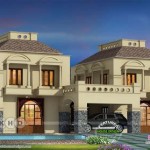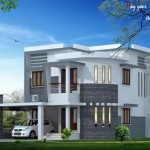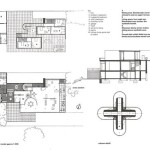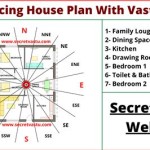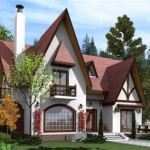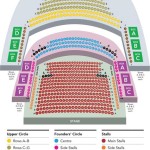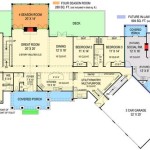Hillside Home Plans: Maximizing Sloping Lot Potential
Building on a sloping lot presents unique challenges and opportunities. While a flat lot offers a straightforward building process, a hillside location can provide stunning views, natural light, and a unique architectural character. Successfully navigating the complexities of hillside construction requires careful planning and specialized house plans designed specifically for sloping lots. These plans, often referred to as hillside home plans, address the specific needs of this type of terrain.
One of the primary considerations for hillside home plans is the foundation. Standard foundation designs are not suitable for sloping terrain. Instead, options like stepped foundations, walkout basements, or stilt foundations are often employed. Stepped foundations follow the slope of the land, creating tiered levels within the home. Walkout basements utilize the slope to create a livable space on the lower level with direct access to the backyard. Stilt foundations elevate the home above the slope, minimizing excavation and preserving the natural landscape.
Orientation is another crucial factor in hillside home design. Properly orienting the home maximizes sunlight exposure and captures views while minimizing the impact of prevailing winds. Often, this involves positioning the main living areas towards the view and utilizing strategic window placement to harness natural light.
Drainage is a critical concern on sloping lots. Without proper drainage planning, rainwater runoff can cause erosion, foundation damage, and landscaping issues. Hillside home plans often incorporate features like retaining walls, French drains, and swales to manage water flow and protect the property.
Accessibility is an aspect that requires careful consideration in hillside homes. Navigating steep slopes can be challenging, particularly for individuals with mobility limitations. Incorporating features like ramps, elevators, or strategically placed walkways can improve accessibility and ensure the home remains functional for all occupants.
The design of hillside homes often incorporates split-level or multi-level layouts. These designs effectively utilize the changing elevation of the lot and create distinct living zones. Split-level homes typically feature staggered floor levels connected by short flights of stairs, while multi-level homes have more distinct floor levels and may incorporate elevators for vertical circulation.
Garage placement presents a unique challenge in hillside home design. Depending on the slope and orientation of the lot, the garage may be located on the upper level, lower level, or tucked underneath the main living area. Access to the garage is also a crucial consideration, requiring careful planning of driveways and walkways.
Cost is an important factor to consider when building on a sloping lot. Due to the complexities of foundation work, excavation, and specialized construction techniques, building on a hillside can be more expensive than building on a flat lot. However, the unique advantages of a hillside location, such as breathtaking views and a distinctive architectural style, often outweigh the added costs for many homeowners.
Landscaping plays a vital role in the overall aesthetic and functionality of a hillside home. Terracing, retaining walls, and strategically planted vegetation can help stabilize the slope, prevent erosion, and create visually appealing outdoor spaces. Choosing drought-tolerant plants and incorporating efficient irrigation systems can minimize water usage and maintenance.
Working with an experienced architect and builder specializing in hillside construction is essential for a successful project. They possess the expertise to navigate the complexities of sloping lots and ensure the home is structurally sound, aesthetically pleasing, and functional for years to come.
Choosing the right materials is also crucial for hillside homes. Durable, weather-resistant materials are essential for withstanding the elements and minimizing maintenance. Materials like concrete, stone, and stucco are often preferred for their durability and ability to blend seamlessly with the natural landscape.
Energy efficiency is a significant consideration in any home design, but it's especially important in hillside homes due to their exposure to the elements. Incorporating features like high-performance windows, insulation, and energy-efficient HVAC systems can help reduce energy consumption and lower utility costs.
Local building codes and regulations play a significant role in hillside home design. These codes often dictate specific requirements for foundation design, drainage systems, and setbacks. It’s essential to consult with local authorities and ensure the home plan complies with all applicable regulations.
The selection of a hillside home plan should reflect the homeowner's lifestyle and needs. Factors like the number of bedrooms, bathrooms, and living spaces, as well as desired amenities like a home office, gym, or outdoor entertaining area, should be carefully considered.
Ultimately, building a home on a sloping lot presents both challenges and rewards. By carefully considering the unique aspects of hillside construction and selecting a well-designed plan, homeowners can create a beautiful, functional, and enduring home that maximizes the potential of their hillside property.

Plan 51696 Traditional Hillside Home With 1736 Sq Ft 3 Be

Plan 51697 Traditional Hillside Home With 1736 Sq Ft 3 Be

Looking For The Perfect Affordable Cottage With A Large Covered Balcony Plan 1143

Sloping Lot House Plans Hillside Daylight Basements Craftsman Plan Basement

Plan 52164 Hillside House With 1770 Sq Ft 4 Bedrooms 3 F

Google Image Result For Https Www Houseplans Pro Assets Plans 496 D 577 Front Photo Duplex House Sloping Lot Plan Beach

Hillside And Sloped Lot House Plans

Hillside House Slope Design

Hillside House Plans For A Rustic 3 Bedroom Mountain Home

Plan 053h 0018 The House

